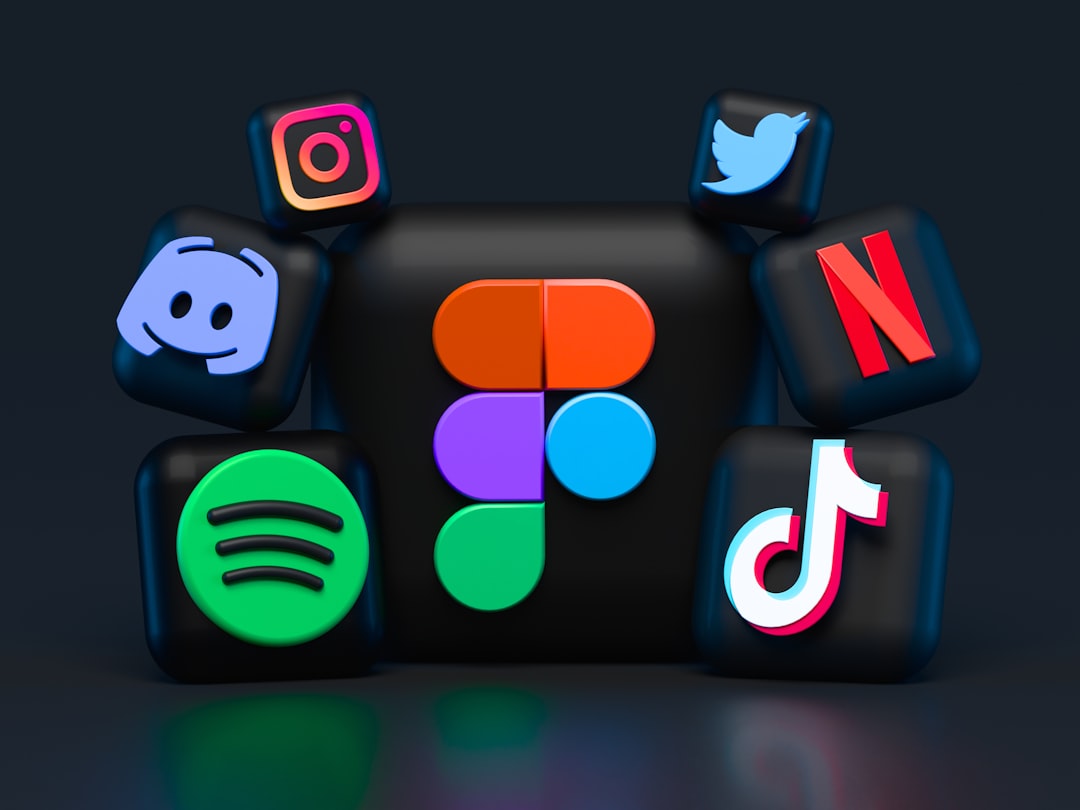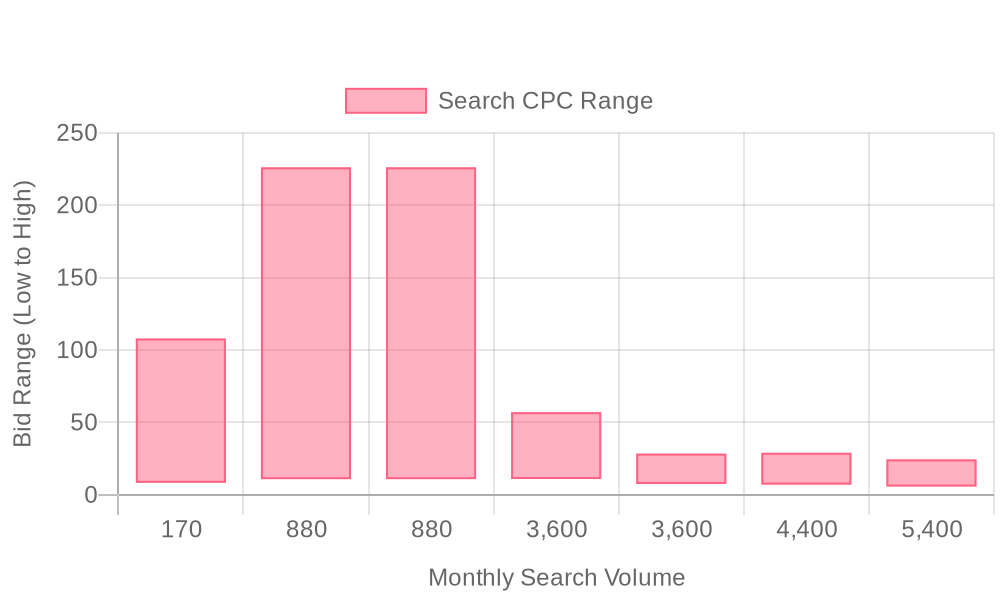
Supercharge your lead generation with a FREE Google Ads audit - no strings attached! See how you can generate more and higher quality leads
Get My Free Google Ads AuditFree consultation

No commitment
Supercharge your lead generation with a FREE Google Ads audit - no strings attached! See how you can generate more and higher quality leads
Get My Free Google Ads AuditFree consultation

No commitment
In today's dynamic marketing landscape, harnessing the full potential of Pay Per Click Advertising through Google Ads is essential for B2B marketers looking to optimize reach and drive quality leads efficiently. However, many face challenges like missing high-value prospects due to CRM tracking gaps or failing to score leads effectively. Pay Per Click Advertising offers a way to connect with highly-intent audiences, thus mitigating these challenges and bridging the gap between online engagement and offline conversions. For those navigating complex sales environments, mastering Google Ads becomes a game-changer, allowing for precise targeting and comprehensive ROI measurement, all while ensuring that every ad dollar is spent on qualified prospects.

Modern revenue teams demand more than visibility—they need systems that reliably convert high-intent interest into measurable sales pipeline. By refining every stage of the Google Ads for Pay Per Click Advertising process, organizations can move beyond basic clicks to achieve a predictable flow of qualified leads that fuel sales and long-term growth.
This guide delivers a structured approach to building lead generation with Google Ads, focusing on actionable data, audience precision, creative consistency, and performance optimization. By leveraging unified marketing data and syncing enriched lead profiles directly into Google Ads, marketers can eliminate waste and ensure their investment targets the most valuable prospects.
Ready to unlock more qualified leads from your ad spend? Get started for free with Sona.

Modern B2B revenue teams face mounting complexity in reaching decision-makers who matter most. Google Ads for Pay Per Click Advertising delivers the precision and scale needed to shape campaigns around unique audience signals, using real-time data to drive results in fiercely competitive channels.
Ready to see how advanced segmentation and real-time insights can transform your PPC performance? Get started for free with Sona.
Vertical keyword targeting enables teams to capture demand beyond broad PPC advertising by identifying niche services that align with their core offerings. Focusing on specialized keywords helps segment audiences more precisely, attracting prospects who are actively searching for solutions that match unique business needs. This granular approach not only reduces pay-per-click costs but also increases conversion rates by driving high-intent traffic directly to relevant content or offers.
Competitor analysis provides a direct path to market differentiation, allowing teams to identify gaps in their competitors' paid search presence. By leveraging industry-specific insights, marketers can refine their PPC strategies, outbid rivals on underutilized keywords, and capture market share in overlooked segments. This iterative process is amplified when enriched account and intent data reveal shifts in competitor activity, ensuring that marketing investments are always targeted where the opportunity is greatest.
Industry-specific placements offer a powerful way to boost visibility among motivated buyers. Running ads on trade forums, vertical directories, or specialized publications positions brands in front of decision-makers who are already engaged in research and purchase cycles. When these placements are unified with visitor identification data, marketers can pinpoint which companies are engaging most and prioritize outreach or adjust messaging based on real-time behavior.
Content retargeting transforms high-value assets like whitepapers, guides, or webinars into ongoing demand-generation engines. By tracking engagement across the funnel and syncing CRM data with Google Ads, teams can nurture leads with tailored follow-up ads and validate which content directly supports conversions. Advanced attribution connects online interactions with offline sales, allowing marketing and sales teams to measure the true ROI of every touchpoint and optimize future campaigns based on full-funnel performance.
Looking to capture more high-intent leads and maximize campaign impact? Get started for free with Sona.
Audience segmentation stands at the core of successful Google Ads for Pay Per Click Advertising. Marketers who precisely define and activate real-time audience segments consistently outperform those relying on generic targeting, driving greater efficiency and higher conversion rates. Sophisticated segmentation translates to fewer wasted impressions, better budget control, and the ability to connect with buyers at the exact point of intent.
Ready to put advanced segmentation into action? Get started for free with Sona.

| Industry | Keyword | Monthly Search Volume | Competition Level | Low Bid | High Bid |
| Pay Per Click Advertising | google pay per click cost | 170 | LOW | 8.34 | 107.97 |
| Pay Per Click Advertising | google pay per click | 880 | LOW | 10.86 | 226.15 |
| Pay Per Click Advertising | google ads pay per click | 880 | LOW | 10.86 | 226.15 |
| Pay Per Click Advertising | google ppc ads | 3600 | LOW | 10.97 | 57.09 |
| Pay Per Click Advertising | ppc ads | 3600 | LOW | 7.52 | 28.44 |
| Pay Per Click Advertising | pay per click advertising | 4400 | LOW | 7.11 | 29.04 |
| Pay Per Click Advertising | pay per click | 5400 | LOW | 5.78 | 24.49 |
A focused keyword strategy for Google Ads for Pay Per Click Advertising forms the backbone of high-performing PPC campaigns. Marketers achieve stronger ROI by analyzing real user search behavior and mapping their keyword targeting directly to actionable purchase intent. This approach enables revenue teams to align paid search efforts with the queries most likely to convert, minimizing wasted spend and maximizing relevance at every touchpoint. For a comprehensive overview of building and optimizing Google Ads PPC campaigns, see how to build and optimize PPC campaigns.
A modern keyword approach for Google Ads for Pay Per Click Advertising is not static. It evolves as user behavior shifts, as audience data grows richer, and as conversion signals become more precise. Integrating real-time insights and unified CRM data into keyword selection and audience management ensures every dollar spent drives higher-value leads, greater efficiency, and improved campaign outcomes. To see how you can implement these strategies, get started for free with Sona.
Effective Google Ads for Pay Per Click Advertising begins with carefully constructed keyword lists. Segmenting by service type and geography allows marketing teams to tailor their reach, ensuring ads appear only to high-value prospects within relevant regions and verticals. Long-tail keywords and question-based queries—such as “best PPC strategies for SaaS businesses” or “how to reduce pay-per-click costs in B2B”—capture users with urgent, specific needs, often translating to higher conversion rates. By incorporating real-time intent data, marketers can shift budget toward accounts demonstrating in-market activity, ensuring that spend aligns with emerging demand and evolving buyer journeys. When visitor identification is layered into this process, campaigns can go beyond anonymous clicks to prioritize keywords that attract decision-makers from target companies, driving measurable pipeline growth.
For a comprehensive overview of how to build and optimize effective Google Ads PPC campaigns for lead generation and ROI, see this guide to Google Ads PPC campaigns.
Ad copy serves as the frontline in paid search and PPC advertising. Messaging must address core pain points, such as slow vendor response or opaque pricing, while weaving in urgency—think limited-time offers or immediate consultations—to prompt action. Highly relevant, compelling copy improves Quality Scores and lowers pay-per-click costs by increasing click-through rates and ensuring alignment between the ad and the user’s search intent. With dynamic audience data constantly refreshed as leads progress through the funnel, marketers can customize ad copy for each stage, presenting tailored value propositions that resonate with decision-makers and influencers alike. For additional insights on optimizing ad messaging for different funnel stages, explore our marketing analytics blog.
Landing pages must reflect the promise of the ad and create a seamless user experience from click to conversion. Each page should feature a headline that matches the search query, supporting copy that addresses the visitor’s specific needs, and a clear, explicit call-to-action—such as scheduling a demo or downloading a resource. Fast load times, mobile responsiveness, and visual clarity reduce friction, keeping prospects engaged and boosting conversion rates. When integrated with advanced visitor identification, marketers can personalize landing page content based on company, industry, or buyer persona, transforming a generic experience into a high-touch interaction that accelerates pipeline velocity. For best practices on enhancing landing page effectiveness, review our collection of actionable playbooks.
Continuous optimization is essential for sustainable PPC campaign management. Leveraging smart bidding strategies, such as Target CPA or Maximize Conversions, empowers teams to automate bid adjustments based on real-time performance signals. Offline data imports—like CRM-qualified leads or closed-won deals—feed back into the platform, refining conversion tracking and revealing the true ROI of each campaign. By syncing enriched audiences and lead data into Google Ads and downstream systems, marketers ensure that every touchpoint is informed by unified, actionable insights. This approach keeps campaigns agile, allowing budgets and creative to pivot as new opportunities emerge and audience behaviors evolve. To see how these strategies can transform your results, get started for free with Sona.
Expanding your Google Ads for Pay Per Click Advertising presence demands a proactive, insight-driven approach to campaign management. B2B revenue teams seeking to unify audience data and maximize conversion outcomes must look beyond basic keyword targeting, leveraging adaptive strategies that keep campaigns relevant and engaging. For a comprehensive overview of building effective campaigns, explore this guide to Google Ads PPC campaigns and discover additional tips in our marketing analytics blog.
Ready to unify your PPC strategy and audience data? Get started for free with Sona.
In wrapping up our exploration of Google Ads for Pay Per Click (PPC) advertising, it's clear that leveraging PPC can significantly impact your business's online visibility and success. By understanding the mechanics of Google Ads, including its cost structures and strategic implementations, you can effectively drive targeted traffic and optimize your marketing spend.
Throughout this discussion, we've navigated the intricacies of PPC advertising, highlighting the benefits of reaching potential customers at the exact moment they're searching for your products or services. We've also examined how strategic keyword selection and ad placement can enhance your campaign's effectiveness and deliver a robust return on investment.
The potential for transformation through PPC is immense. By harnessing the power of Google Ads, you're not just increasing visibility; you're building a dynamic presence that can adapt and thrive in the ever-evolving digital landscape. Embrace this opportunity to redefine your approach to online marketing and drive measurable results.
To take the next step in optimizing your digital marketing efforts, start for free and experience our platform's capabilities today. Unlock the insights and tools that will empower your business to excel in the competitive world of PPC advertising.
Google Ads for PPC advertising is a platform that allows marketers to connect with highly-intent audiences through precise targeting and comprehensive ROI measurement, ensuring ad dollars are spent on qualified prospects.
Pay-per-click advertising works by allowing advertisers to bid on keywords relevant to their target audience, displaying ads to users searching for those terms, and charging the advertiser each time the ad is clicked.
The costs associated with Google Ads depend on the bidding strategy, keyword competition, and the quality score of the ads, which influences the cost-per-click.
Effective strategies for PPC advertising include using data-driven approaches, refining audience and keyword strategies, aligning creative content, optimizing performance, and ensuring cross-channel cohesion.
To set up a Google Ads account for PPC, create targeted keyword lists, develop compelling ad copy, design effective landing pages, and implement data-driven optimizations for campaign management.
Join results-focused teams combining Sona Platform automation with advanced Google Ads strategies to scale lead generation

Connect your existing CRM

Free Account Enrichment

No setup fees
No commitment required

Free consultation

Get a custom Google Ads roadmap for your business
Join results-focused teams using Sona Platform automation to activate unified sales and marketing data, maximize ROI on marketing investments, and drive measurable growth

Connect your existing CRM

Free Account Enrichment

No setup fees
No commitment required

Free consultation

Get a custom Google Ads roadmap for your business
Over 500+ auto detailing businesses trust our platform to grow their revenue
Join results-focused teams using Sona Platform automation to activate unified sales and marketing data, maximize ROI on marketing investments, and drive measurable growth

Connect your existing CRM

Free Account Enrichment

No setup fees
No commitment required

Free consultation

Get a custom Google Ads roadmap for your business
Over 500+ auto detailing businesses trust our platform to grow their revenue
Join results-focused teams using Sona Platform automation to activate unified sales and marketing data, maximize ROI on marketing investments, and drive measurable growth

Connect your existing CRM

Free Account Enrichment

No setup fees
No commitment required

Free consultation

Get a custom Google Ads roadmap for your business
Over 500+ auto detailing businesses trust our platform to grow their revenue
Join results-focused teams using Sona Platform automation to activate unified sales and marketing data, maximize ROI on marketing investments, and drive measurable growth

Connect your existing CRM

Free Account Enrichment

No setup fees
No commitment required

Free consultation

Get a custom Google Ads roadmap for your business
Over 500+ auto detailing businesses trust our platform to grow their revenue
Our team of experts can implement your Google Ads campaigns, then show you how Sona helps you manage exceptional campaign performance and sales.
Schedule your FREE 15-minute strategy sessionOur team of experts can help improve your demand generation strategy, and can show you how advanced attribution and data activation can help you realize more opportunities and improve sales performance.
Schedule your FREE 30-minute strategy sessionOur team of experts can help improve your demand generation strategy, and can show you how advanced attribution and data activation can help you realize more opportunities and improve sales performance.
Schedule your FREE 30-minute strategy sessionOur team of experts can help improve your demand generation strategy, and can show you how advanced attribution and data activation can help you realize more opportunities and improve sales performance.
Schedule your FREE 30-minute strategy sessionOur team of experts can help improve your demand generation strategy, and can show you how advanced attribution and data activation can help you realize more opportunities and improve sales performance.
Schedule your FREE 30-minute strategy session





Launch campaigns that generate qualified leads in 30 days or less.
